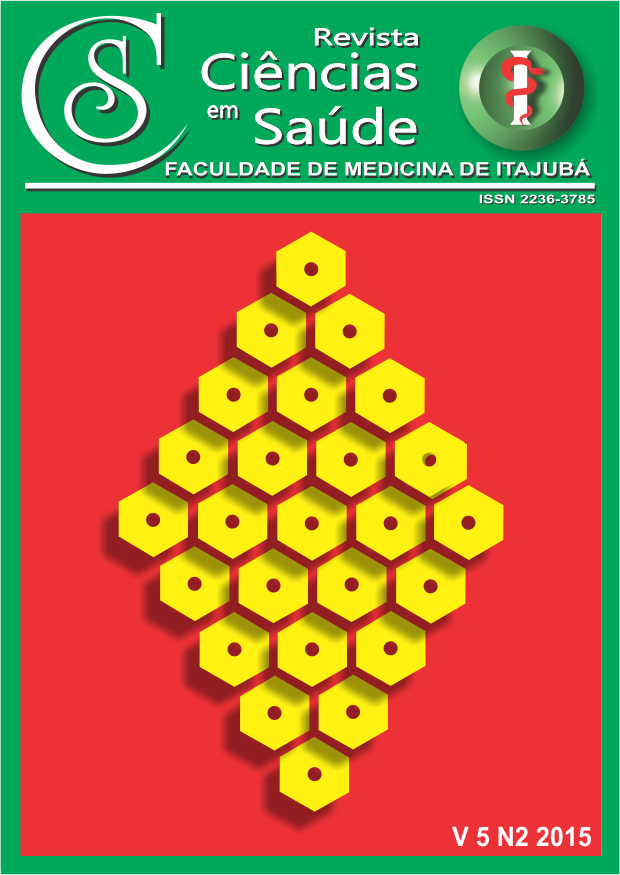Análise Histopatológica do Fígado, Estômago e Intestinos de Camundongos Submetidos ao Consumo Agudo de Etanol/Histopathological analysis of the liver, stomach and intestines of mice undergoing acute ethanol exposure
Main Article Content
Abstract
RESUMO
Objetivo: O presente estudo teve como objetivo analisar o efeito da administração aguda de etanol 50% sobre a histopatologia do trato gastrointestinal (TGI) através do estômago, fígado e intestinos de camundongos. Materiais e métodos: 8 animais da linhagem C57BL/6, foram divididos da seguinte maneira: O grupo 1- controle (n=4), recebeu 0,2 mL de salina fisiológica, por dia, durante 4 dias consecutivos por gavagem. O grupo 2- experimental (n=4), recebeu 0,2mL de etanol 50%(v/v), nas mesmas circunstancias e condições do grupo 1. No 5º dia os animais foram submetidos à eutanásia por deslocamento cervical. Em seguida, foi realizada uma laparotomia e foram coletados estômago, lobo esquerdo do fígado e intestinos delgado e grosso, os quais foram manipulados a fim de expor a mucosa e receberam tratamento histológico para análise. Resultados: O tratamento com etanol produziu hiperemia em alguns vasos de 25% dos fígados analisados quando comparados com o grupo controle. Da mesma forma, o referido tratamento produziu lesão ulcerada superficial com hiperemia, hemorragia e resquícios de material necrótico em 25% dos estômagos analisados, e úlcera mais profunda na parece gástrica, com infiltrado linfocitário em outros 25% dos estômagos analisados em comparação com o grupo controle. Por outro lado, o tratamento com etanol não foi capaz de produzir alterações nos intestinos delgado e grosso, quando comparado ao grupo controle. Conclusão: O consumo de etanol em caráter agudo foi capaz de causar lesão em fígado e estômagos dos animais do grupo experimental, elucidando aspectos negativos do consumo em excesso dessa substância.
Palavras chave: Álcool, Fígado, Estômago, Intestinos, Histologia.
ABSTRACT:
Objective: This study aimed to analyze the effect of acute exposure of ethanol 50% on the histopathology of gastrointestinal (GI) tract through the examination of the stomach, liver and intestines of mice. Materials and Methods: 8 C57BL / 6 mice were divided as follows: Group 1-control group (n = 4) received 0.2 ml of physiological saline by gavage, everyday, for 4 days. Group 2-experimental group (n = 4) received 0.2 mL of 50% ethanol (v / v), in the same conditions of Group 1. On the 5th day the animals underwent euthanasia by cervical dislocation. Then, laparotomy was performed and the stomach, left lobe of the liver and small and large intestines were collected. These organs were manipulated in order to expose the mucosa and received treatment for histological analysis. Results: Treatment with ethanol produced hyperemia in some vessels in 25% of the livers which were analyzed when compared to the control group. Similarly, the reported treatment produced superficial ulcerated lesion with hyperemia and hemorrhage in 25% of the analyzed stomachs. Deeper ulcers were found in the gastric mucosa, with lymphocytic infiltration in another 25% of stomachs analyzed in comparison to the control group. On the other hand, the treatment with ethanol was not able to produce changes in the small and large intestines, when compared to control group. Conclusion: Acute ethanol consumption has been able to cause liver and stomach injury in the animals of the experimental group, showing some of the negative aspects of excessive consumption of this substance.
Keywords: Alcohol, Liver, Stomach, Intestines, Histology.
Article Details
Authors maintain copyright and grant the HSJ the right to first publication. From 2024, the publications wiil be licensed under Attribution 4.0 International 
 , allowing their sharing, recognizing the authorship and initial publication in this journal.
, allowing their sharing, recognizing the authorship and initial publication in this journal.
Authors are authorized to assume additional contracts separately for the non-exclusive distribution of the version of the work published in this journal (e.g., publishing in an institutional repository or as a book chapter), with acknowledgment of authorship and initial publication in this journal.
Authors are encouraged to publish and distribute their work online (e.g., in institutional repositories or on their personal page) at any point after the editorial process.
Also, the AUTHOR is informed and consents that the HSJ can incorporate his article into existing or future scientific databases and indexers, under the conditions defined by the latter at all times, which will involve, at least, the possibility that the holders of these databases can perform the following actions on the article.

